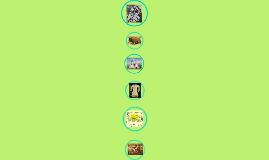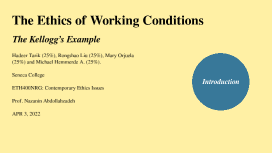Eth
Transcript: m 1 2 p b Y g X F Caste System In India What is Caste System? "India's caste system is among the world's oldest forms of surviving social stratification." Caste System * 3000 Years Old institution. * Divides Hindus into rigid hierarchical groups based on their karma (work) and dharma (the Hindi word for religion, but here it means duty). * The caste system, was developed by the Brahmin (priest) caste in order to maintain their superiority. *The term caste is attributed to the Portuguese word “Casta”, which means race, lineage, or breed. *The English word 'Caste' is an adjustment of the original term 'Casta'. E According to the religious theory, there are four main categories of the four varnas (colors or castes); brahmins (priests), kshatriyas (warriors), vaishyas (businessmen), and shudras (servants). . Untouchables are born from outside the body of the Creator, almost a different species from Brahma's children . The Origin Of Caste System. Traditional theory According to this theory, Brahma, the creator the universe had created the caste system. Different castes were born out of various body parts of Brahma. Like, from his mouth came the Brahmins, from hands the Kshatriya, from stomach the Vaishyas and so on. People belonging to different castes then function as per the source of their origin. In ancient India, various sub-castes were born out of these castes and this has received a classical interpretation in the account of Manu. The theory has been criticized for its being a supernatural theory and for its base being just divine. According to one long-held theory about the origins of South Asia's caste system, Aryans from central Asia invaded South Asia and introduced the caste system as a means of controlling the local populations. According to one long-held theory about the origins of South Asia's caste system, Aryans from central Asia invaded South Asia and introduced the caste system as a means of controlling the local populations. "Aryan Invasion" D The Untouchables In addition to the varnas, there is a fifth class in Hinduism. It encompassed outcasts who, literally, did all the dirty work. They were referred to as "untouchables" because they carried out the miserable tasks associated with disease and pollution, such as cleaning up after funerals, dealing with sewage, and working with animal skin. "Life of Untouchables" Life of Untouchables *Untouchables were confined to the menial and ignominious jobs and had no right or privilege in the society. *The jobs they were majorly assigned or better to say forced to do were to collect human waste and to throw/dispose it; leather works; sweeping and other works which were considered dirty by upper castes. The most common discriminatory practices against untouchables included: 1. Denial of access to public facilities, well, schools, post offices and courts. 2. Prohibition against entering Hindu temples. 3. Exclusion from professional occupations. 4. Residential segregation. 5. Denial of access to restaurants theatres and barber shops. 6. Prohibition from using horse, bicycle, umbrellas, or wearing jewelry. 7. Restrictions involved maintaining prescribed distance from person of higher caste while on roads and streets. Discriminatory Practices Against Dalits C Upliftment of Untouchables Colonization of India and introduction of western education. Various Socio-religious movements. Efforts of B.R Ambedkar ( Architect of Indian Constitution and a dalit reformer, politician) Efforts of Mahatma Gandhi. *Even though Gandhiji had thought of the ways of removal of untouchability before the birth of Dr. Ambedkar, it was Ambedkar who drew the attention of the Congress Organisation and also of the entire nation towards the grave problems of the untouchables and their deplorable conditions. Ambedkar had made a detailed study of the problem of untouchability, its origin, development etc. Efforts of B.R Ambedkar :- B Life of Untouchables Today Besides banning untouchability, the constitution provides these groups with specific educational and vocational privileges and grants them special representation in the Indian parliament. In support of these efforts, the Untouchability (Offenses) Act (1955) provides penalties for preventing anyone from enjoying a wide variety of religious, occupational, and social rights on the grounds that he or she is from a Scheduled Caste or Scheduled Tribe. * Slow improvement in the conditions of untouchables. * Caste system is still rigid in the rural areas. * Crime rates against untouchables are still high. * 75% of untouchables still lives below poverty line. A American Slavery Vs. Caste System Both American racism and Indian casteism malevolently twist the notions of purity and pollution to foster and maintain untenable levels of structural social and cultural inequity. Forceful black segregation followed by white self-segregation to affluent neighborhoods and better endowed school systems are eerily similar to how Dalits were kept Both of

















